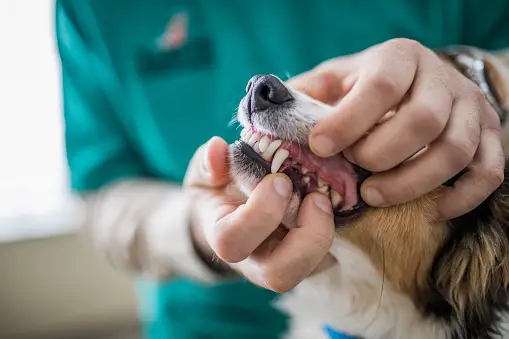If you are a dog owner, you understand the importance of keeping your furry friend healthy and happy. One aspect of your dog’s well-being that should not be overlooked is their skin. Just like humans, dogs can experience various skin conditions that can cause discomfort and irritation. From dryness and itchiness to allergies and infections, understanding the common issues that can affect your dog’s skin is crucial in providing the necessary care and remedies. In this article, we will delve into the world of dog skin conditions, highlighting the most prevalent problems and offering effective remedies to help your canine companion thrive.
Common Dog Skin Conditions
1. Allergies
Allergies are one of the most common dog skin conditions. Just like humans, dogs can also develop allergies to various substances in their environment. These substances, known as allergens, can include pollen, dust mites, certain foods, and even fleas.
When a dog is allergic to something, their immune system overreacts to the allergen, leading to a range of skin issues. Some common signs of allergies in dogs include excessive scratching, redness, skin rashes, hair loss, and recurrent ear infections.
To manage allergies in dogs, it is important to identify and avoid the specific allergens triggering the reaction. This may involve making changes to the dog’s diet, using hypoallergenic bedding, and keeping the environment clean and free from potential allergens. In some cases, your veterinarian may recommend allergy testing or prescribe medications such as antihistamines or corticosteroids to alleviate the symptoms.
2. Bacterial Infections
Bacterial infections can also affect a dog’s skin, causing discomfort and irritation. Common types of bacteria that can cause skin infections in dogs include Staphylococcus and Streptococcus.
Bacterial skin infections often occur when there is an underlying issue weakening the dog’s immune system or when the skin is damaged, allowing bacteria to penetrate. Symptoms of a bacterial skin infection may include redness, inflammation, pustules, and a foul odor.
Treatment for bacterial skin infections usually involves a combination of topical and oral antibiotics prescribed by a veterinarian. It is crucial to follow the prescribed treatment plan and complete the full course of antibiotics to ensure the infection is completely eradicated. Additionally, keeping the affected area clean and dry, and preventing the dog from scratching or licking the infected area, can help promote healing.
3. Fungal Infections
Fungal infections in dogs are commonly caused by yeast or dermatophytes, such as ringworm. These infections can lead to itchy, inflamed skin, hair loss, and the formation of scaly patches or lesions. Fungal infections are often more prevalent in dogs with compromised immune systems, underlying allergies, or those living in humid environments.
To treat fungal infections, antifungal medications, such as topical creams or oral medications, may be prescribed by a veterinarian. Additionally, regular bathing with medicated shampoos specifically designed to target fungal infections can help eliminate the fungi and soothe the dog’s skin.
Preventing fungal infections involves maintaining good hygiene for your dog, especially if they have a history of recurring infections. Keeping their living environment clean and dry, avoiding contact with infected animals, and regularly checking and grooming your dog’s coat can reduce the risk of fungal infections.
Remember, if your dog is experiencing any skin issues, it is always best to consult with a veterinarian for an accurate diagnosis and appropriate treatment plan.
Remedies for Dog Skin Conditions
1. Proper Hygiene and Grooming
Maintaining proper hygiene and regular grooming practices can significantly help in managing and preventing various skin conditions in dogs. Here are some essential tips to follow:
- Bathing: Regularly bathing your dog using a mild, hypoallergenic shampoo can help remove dirt, allergens, and irritants from their skin. Be sure to use lukewarm water and avoid over-bathing, as excessive bathing can strip their skin of natural oils, leading to dryness and irritation.
- Brushing: Brushing your dog’s coat regularly helps remove dead skin cells, dirt, and loose fur. It also helps distribute natural oils throughout their coat, promoting healthier skin. Use a suitable brush or comb based on your dog’s coat type to prevent tangles and matting.
- Ear Cleaning: Proper cleaning of your dog’s ears is crucial, especially for breeds with floppy or hairy ears. Use a veterinarian-recommended ear cleaner and gently wipe the outer area of their ears to remove excess wax and debris. Avoid inserting anything into the ear canal to prevent injury.
- Nail Trimming: Keeping your dog’s nails trimmed is essential to prevent them from scratching their skin and causing irritations. Regular nail trims also help maintain proper posture and reduce the risk of nail-related injuries.
2. Dietary Changes
A balanced and nutritious diet plays a vital role in maintaining your dog’s overall health, including their skin condition. Consider the following dietary changes to address dog skin conditions:
- Quality Dog Food: Opt for high-quality dog food that provides essential nutrients, including omega-3 fatty acids, vitamins, and minerals. These nutrients promote healthy skin and a shiny coat. Consult your veterinarian to determine the best dog food for your pet’s specific needs.
- Food Allergies: Some skin conditions in dogs are caused by food allergies or sensitivities. If your dog experiences recurring skin issues, your veterinarian may recommend a hypoallergenic diet or an elimination diet to identify potential food triggers.
- Supplements: In certain cases, your veterinarian may suggest adding specific supplements to your dog’s diet to improve their skin health. Omega-3 fatty acid supplements, such as fish oil, can help reduce inflammation and improve the condition of their skin and coat.
3. Medications and Treatments
In more severe cases or when home remedies are insufficient, medications and treatments prescribed by a veterinarian may be necessary. These can include:
- Topical Medications: Your veterinarian may prescribe medicated shampoos, ointments, or sprays to treat specific skin conditions like dermatitis, fungal infections, or hot spots. Follow the instructions provided and apply these medications as directed.
- Oral Medications: For certain skin conditions, oral medications such as antibiotics, antifungals, or corticosteroids may be required. These medications help address underlying causes, reduce inflammation, and alleviate symptoms.
- Allergy Management: If your dog’s skin condition is caused by allergies, your veterinarian might recommend allergy testing and immunotherapy. This involves identifying the specific allergens and creating a customized treatment plan to desensitize your dog’s immune system.
Remember, it’s crucial to consult a veterinarian for an accurate diagnosis and appropriate treatment plan for your dog’s skin condition. The remedies mentioned above can complement veterinary guidance and help improve your dog’s skin health.
The importance of understanding and addressing dog skin conditions cannot be overstated. From allergies and infections to parasites and hormonal imbalances, these conditions can cause significant discomfort and distress for our beloved furry friends. Fortunately, with proper knowledge and care, many of these issues can be effectively managed or even prevented altogether. By regularly monitoring our dogs’ skin, maintaining a healthy diet, and seeking veterinary advice when needed, we can ensure that our canine companions live happy, healthy lives free from the burden of skin conditions. Remember, a dog with healthy skin is a dog that can fully enjoy the love and companionship we share.







